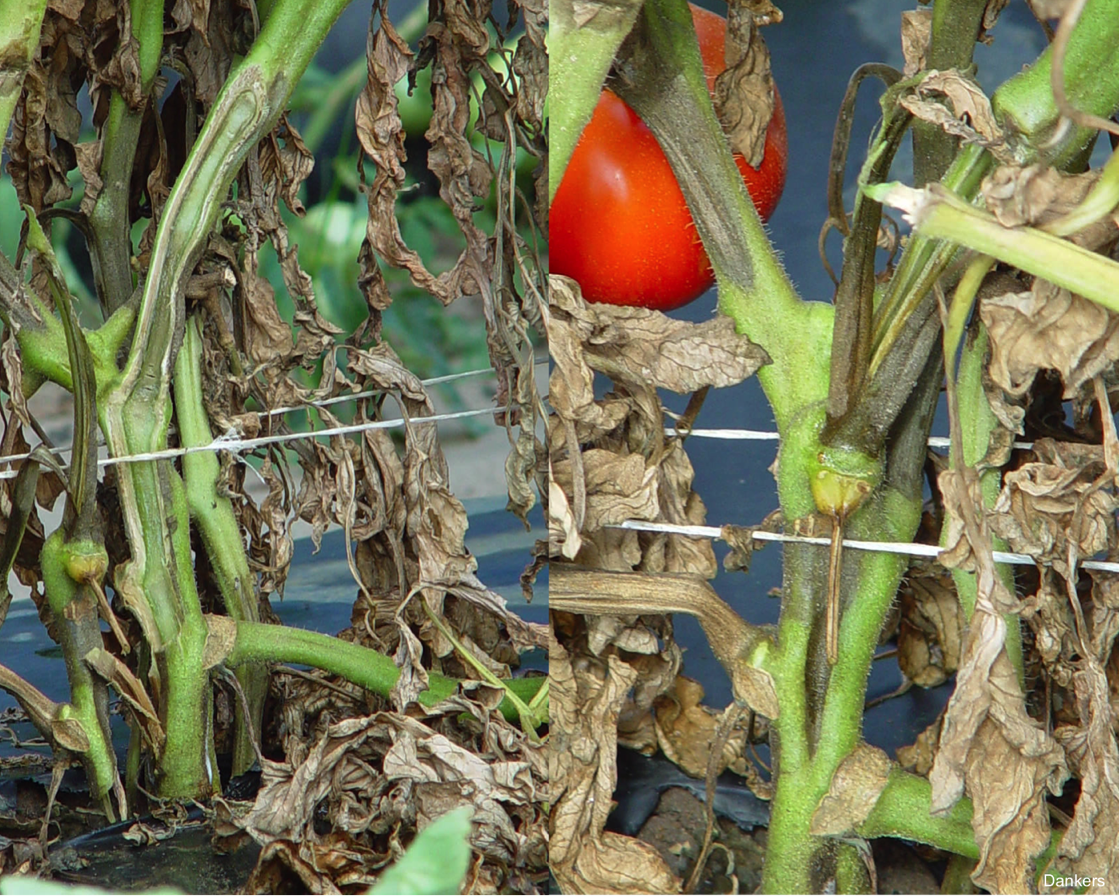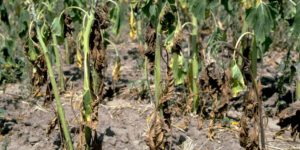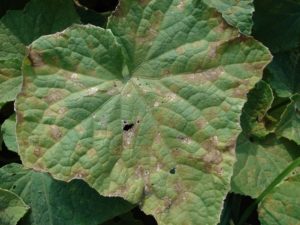What is Bacterial Wilt?
Bacterial wilt is a plant disease that is caused by different kinds of bacteria: Erwinia tracheiphila, Enterobacteriaceae, Burkholderiaceae, or Ralstonia solanacearum. Once the bacterium infects a plant, it will multiply rapidly and clog the plant’s vascular system, making it impossible for water to be transported to plant tissue. Unfortunately, plant death will occur in a relatively short period of time.
Erwinia tracheiphila, in particular, affects cucurbits, most often cucumbers, but also squashes like zucchini, butternut, and patty pan, as well as pumpkins, melons, and gourds. Ralstonia solanacearum, on the other hand, can cause wilt in nightshades like tomatoes, potatoes, peppers, and eggplant.
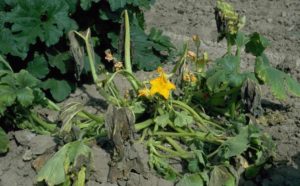
Symptoms of Bacterial Wilt
One of the classic symptoms of a plant infected with bacterial wilt is that it will look wilted even though it has been properly watered. Wilted vines may recover at night only to wilt again the next day. The leaves may or may not turn yellow but can appear dull. Before long, the leaves will die, and the fruit will look stunted or deformed. In just a matter of a week or two, the entire plant wilt and die.
To test whether or not a plant has been infected with bacterial wilt, cut a wilted stem, and squeeze it. If a sticky substance oozes out, then it is bacterial wilt.
Alternatively, cut a wilted stem and hold the cut ends together for about 15 to 20 seconds. Slowly separate the two ends and you will see a stringy ooze if the bacteria is present. Be sure to thoroughly sanitize any tools used for the test.

A third method used to test for bacterial wilt is to immerse the cut stems in water that is room temperature. The bacteria will create a milky discharge in the water.
Note that regardless of the method, the test is not always reliable.
How Do Plants Get Bacterial Wilt?
The bacterial wilt pathogen is spread by the cucumber beetle. Both striped and spotted cucumber beetles are carriers because the bacterium can overwinter in the hibernating beetle’s digestive tract. The bacteria are spread when the beetle’s excrement comes into contact with a cut or wound on the plant’s tissue. As other beetles feed on infected plants, they, in turn, become infected and the cycle continues.
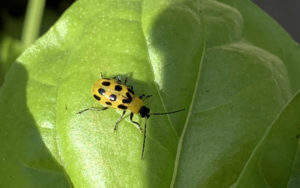
What to Do If Bacterial Wilt is Present
Unfortunately, once a plant is infected with bacterial wilt, there is no cure. The plant must be removed and discarded in the trash. Otherwise, the disease will spread to other plants in the garden. In addition, if left in the garden, the weakened plant will attract more cucumber beetles which will pose an even greater threat of contamination of this pathogen and others diseases like mosaic virus disease.
Do not compost the plant as most compost piles do not reach a sustained temperature hot enough to kill the pathogen.
This article contains affiliate links. If you make a purchase using one of these links, I will receive a very small commission at no additional cost to you, and it will help me maintain this website.
How to Prevent Bacterial Wilt
The main thing you can do to prevent bacterial wilt from killing your plants is to protect your garden from cucumber beetles. You can learn more about this pest and the measures you can take to get rid of them in this helpful article.
Next, make sure your plants are healthy and therefore, less likely to be targeted by cucumber beetles and other pests which attack sick plants, making them more vulnerable to disease.
You can also plant varieties that are resistant to bacterial wilt. Cucumber varieties, for example, that are said to be resistant are Marketmore 76, Saladin, County Fair, Eureka, Little Leaf, and Calypso.
Last, but not least, daily inspect your garden, looking for cucumber beetles and possible signs of wilt and other diseases. Early intervention is key!
Thank you for reading this article! If you found it helpful, please consider sharing it with others via email and social media!
